I have what seems to be a very basic problem, but I cannot solve it, as I have barely used ggplots2... I just want that the plot on the left uses the colors in the variable color1 and the plot on the right uses the colors in the variable color2. This is a MWE:
library(reshape2)
library(ggplot2)
a.df <- data.frame(
id=c("a","b","c","d","e","f","g","h"),
var1=c(1,2,3,4,5,6,7,8), var2=c(21,22,23,24,25,26,27,28),
var3=c(56,57,58,59,60,61,62,63),
color1=c(1,2,"NONE","NONE",1,2,2,1),
color2=c(1,"NONE",1,1,2,2,"NONE",2)
)
a.dfm <- melt(a.df, measure.vars=c("var2","var3"))
ggplot(a.dfm, aes(x=value, y=var1, color=color1)) +
geom_point(shape=1) +
facet_grid(. ~ variable)
Thanks a lot!
